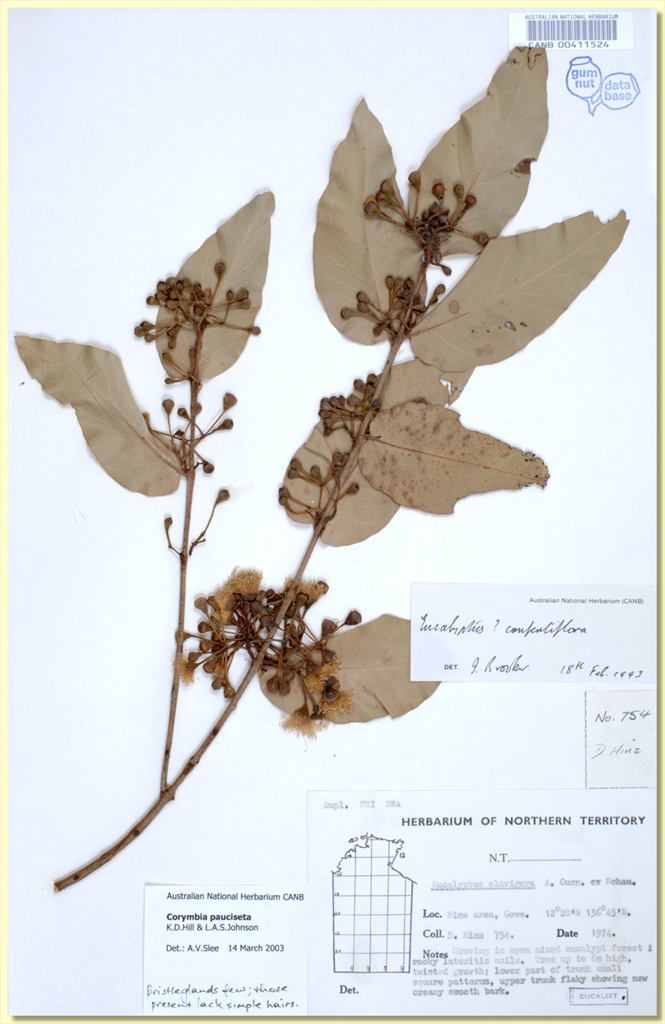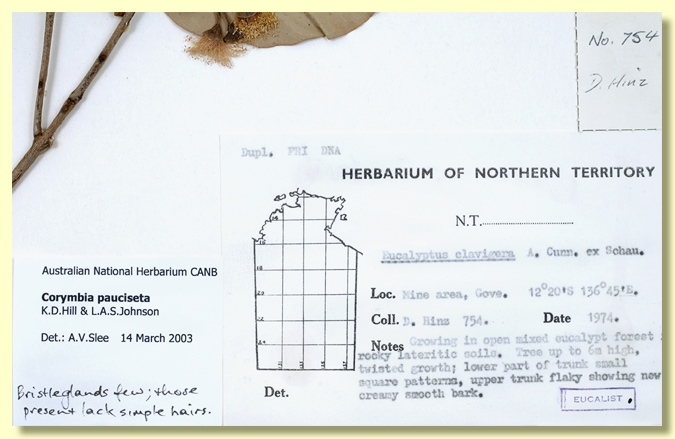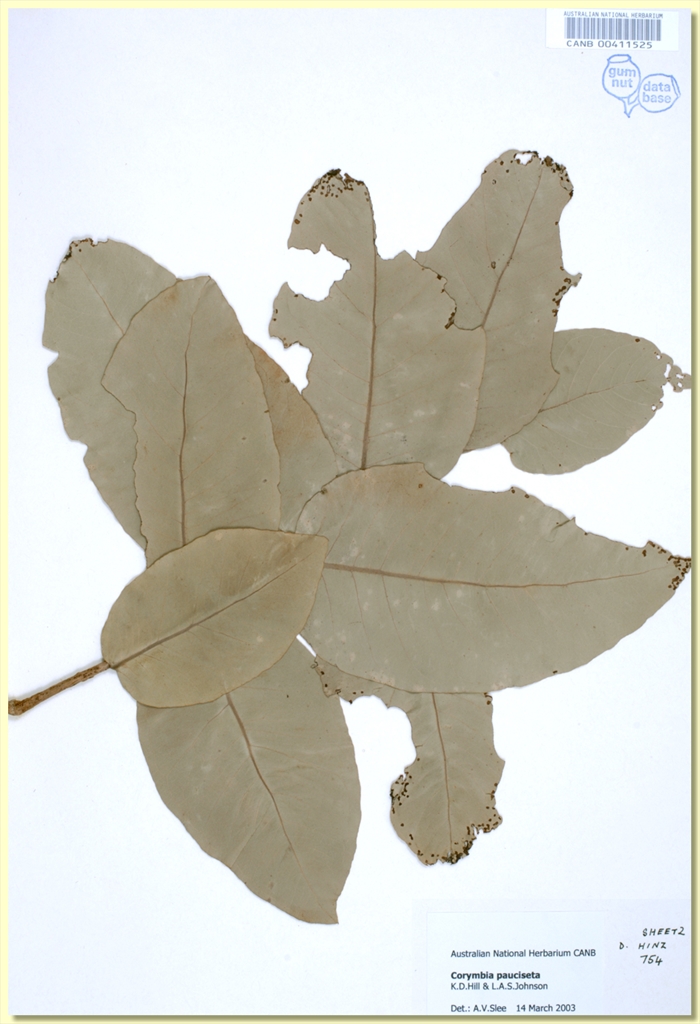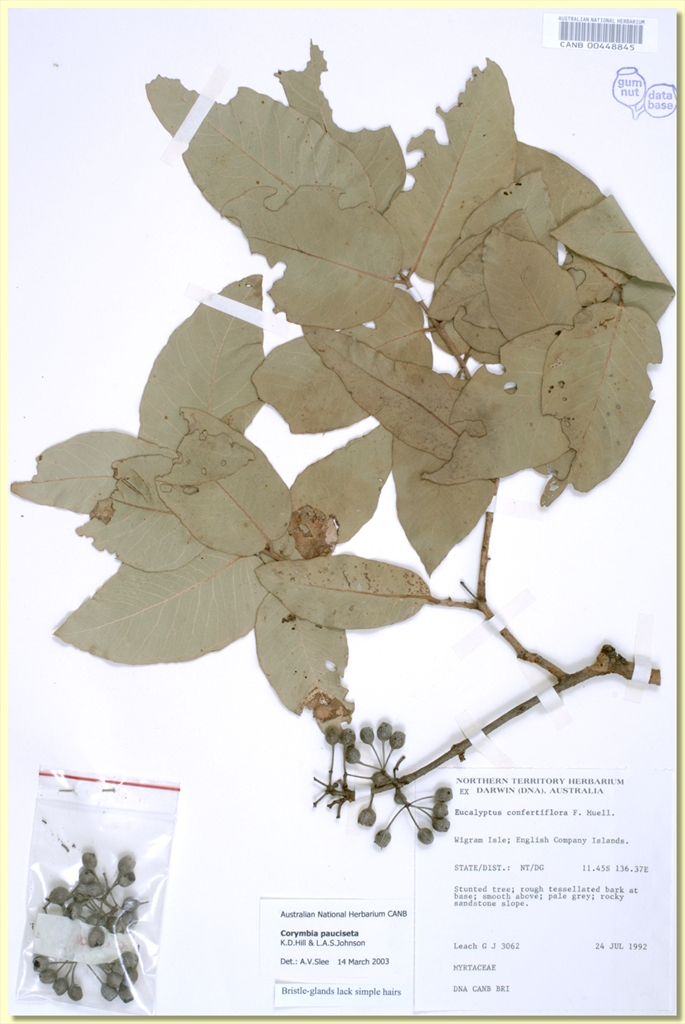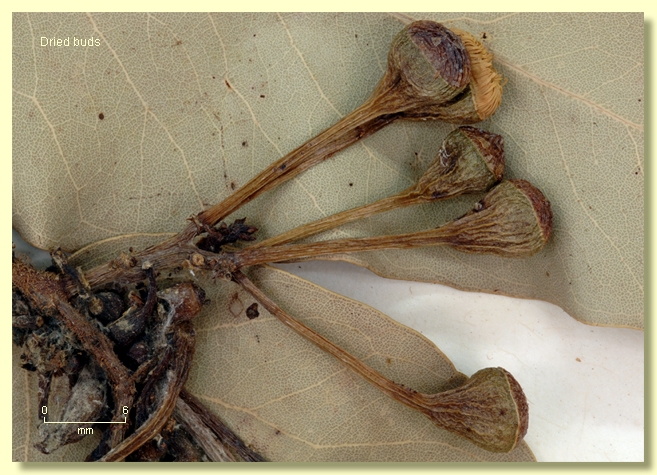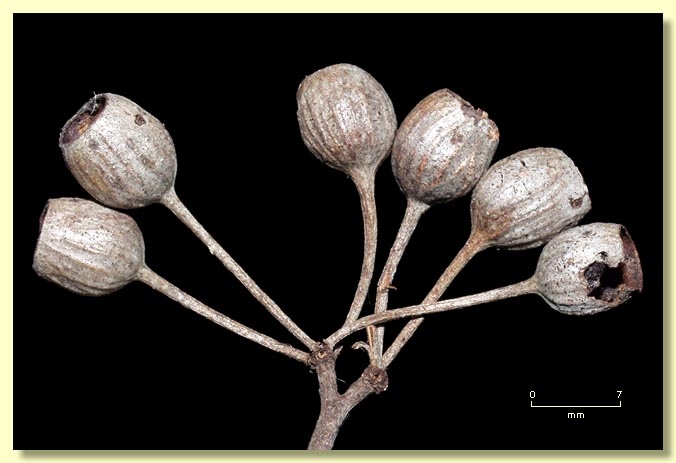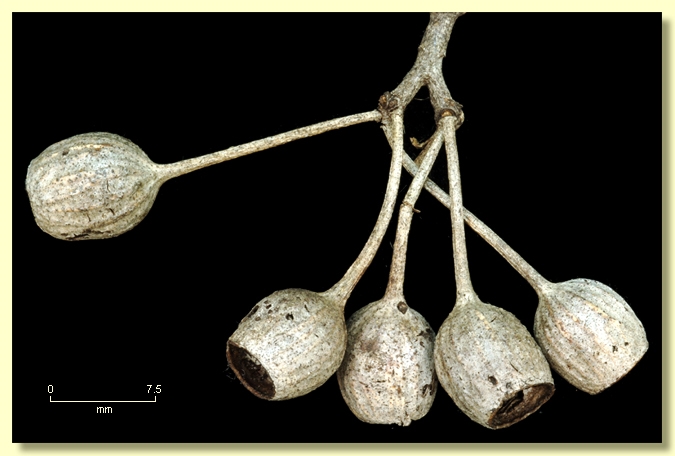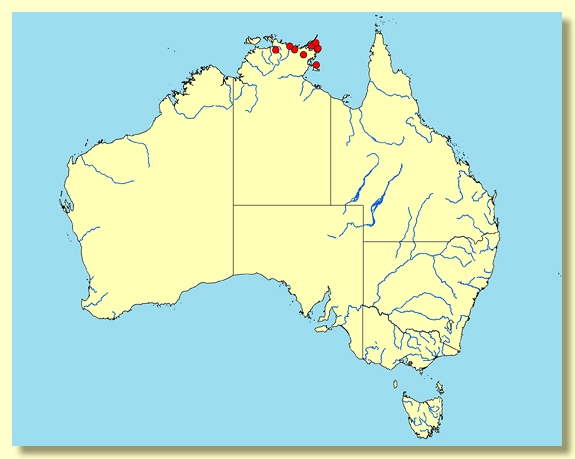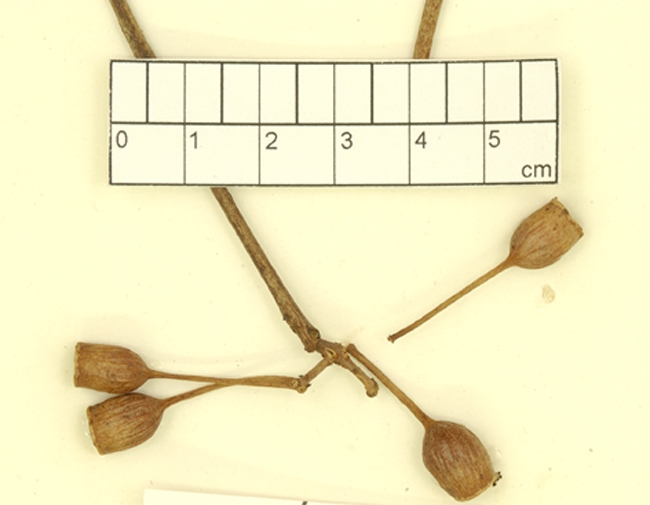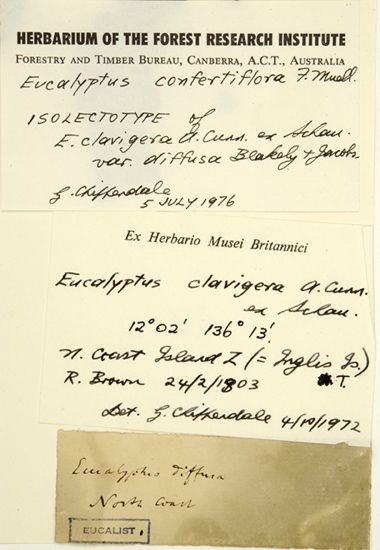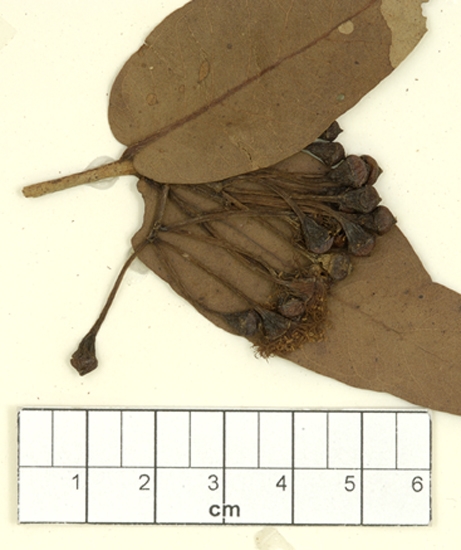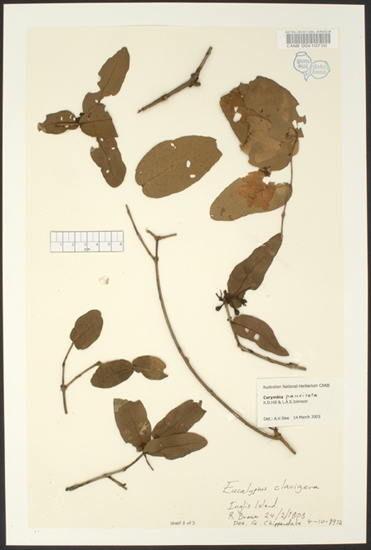Corymbia | Blakearia
Euclid - Online edition
Corymbia pauciseta
Corymbia pauciseta K.D.Hill & L.A.S.Johnson, Telopea 6: 426 (1995).
Tree 6 m tall, ?deciduous in the late dry season. Forming a lignotuber.
Bark rough, persistent, blackish grey, tessellated and somewhat straggly over basal part or all of trunk, then becoming smooth, creamy white to pale grey, shedding in thin flakes.
Branchlets lack oil glands in the pith; younger branchlets setose to scabrid with bristle-glands. In this species the bristle-glands lack simple hairs.
Juvenile growth (coppice or field seedlings to 50 cm): not seen.
Crown of intermediate to adult leaves, opposite or alternate, sessile or shortly petiolate, petioles 0.1–0.5 cm long; blade cordate to ovate to elliptic or lanceolate, (6.3)9–19.5 cm long, 2.7–9 cm wide, ± undulate, base amplexicaul to lobed or rounded, margin entire, apex rounded or broadly pointed, concolorous, dull, green, glabrous to very sparsely setose (if any setae present then restricted to major side-veins, mid-vein and petiole), side-veins at greater than 45° to midrib, reticulation dense to very dense, intramarginal vein present, oil glands obscure.
Inflorescence borne on leafless branchlets below new season’s leaf growth, axillary compound, the rhachis consisting of a basal internode ca 0.2–0.5 cm long, a second internode absent or 0.1–0.3 cm long, and peduncles of variable length within a single inflorescence, 0.2–1.5 cm long, buds 7 per umbel, strongly pedicellate (pedicels 0.9–3.2 cm long). Mature buds pyriform, 0.6–0.7 cm long, 0.4–0.5 cm wide, smooth, scar present (outer operculum shed early), operculum shallowly rounded, stamens inflexed, all fertile, anthers oblong, dorsifixed, versatile, dehiscing by longitudinal slits, style long and straight, stigma tapered, locules 3, the ovules arranged in 3 or 4 ± distinct vertical rows on the placentae. Flowers creamy white.
Fruit pedicellate (pedicels 0.9–3.2 cm long), cylindrical to barrel-shaped, rarely slightly urceolate, 0.8–1.5 cm long, 0.7–1.2 cm wide, thin-walled, disc descending vertically, valves 3, enclosed.
Seeds not seen (presumably brown, saucer-shaped, smooth, hilum ventral, like those of other ghost gums).
Cultivated seedlings (measured at ca node 10): not grown.
Flowering has been recorded in October and November.
A ghost gum tree restricted to coastal and sub-coastal lowland areas of north-eastern Arnhem Land in the Northern Territory, from Maningrida to Gove and Wigram and Maria Islands, where it is a component of low woodland on flat sites. Corymbia pauciseta has a tessellated stocking of rough bark, ± ovate to lanceolate, dull, green, almost or quite glabrous crown leaves that have short petioles and may be stem-clasping. The cream flowers develop on last year’s branchlets.
C. pauciseta is closely related to three other ghost gum species—the widespread C. confertiflora and C. disjuncta, and the Kimberley endemic C. dendromerinx. These species, together with a fifth taxon described by Hill & Johnson (1995) as Corymbia karelgica but not recognised in EUCLID, form a group which, prior to 1995, were all included under the name Eucalyptus confertiflora. The division of this taxon into several species was made in an attempt to resolve the wide variation in petiole length, leaf shape and size, leaf vestiture type and density, and pedicel length seen accross across the whole geographic range, i.e. all of monsoonal northern Australia. Some specimens, especially those variable in leaf shape within the one tree crown, may be impossible to determine satisfactorily to species level without resorting to geography and perhaps not even then.
C. pauciseta differs from both C. confertiflora and C. disjuncta in having virtually glabrous crown leaves. C. disjuncta has larger, more orbicular crown leaves with longer petioles than either species.
In the Top End of the Northern Territory C. pauciseta is easily distinguished from other partly rough-barked ghost gums, C. polysciada and C. kombolgiensis, by the crown leaves, which, in the latter two species, are lanceolate to broadly lanceolate with pointed apices and tapering bases, and have longer petioles. C. polysciada and C. kombolgiensis inhabit more elevated sites, occurring on rises with shallow stony soil, and on escarpment country, respectively.
Other ghost gum species in this general area, C. bella, C. arafurica and C. grandifolia, are smooth-barked
MORE ABOUT CORYMBIA
MORE ABOUT GHOST GUMS
Corymbia pauciseta: Latin paucus, few and seta, a bristle.

